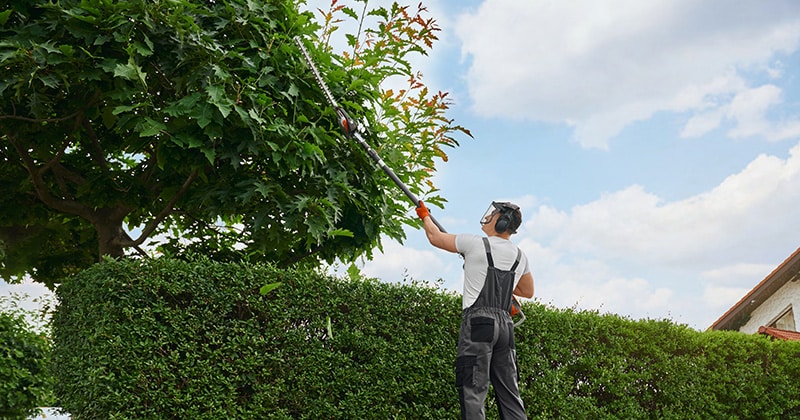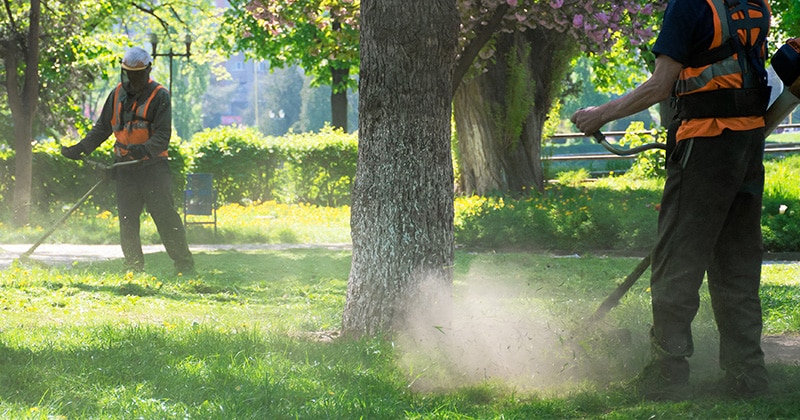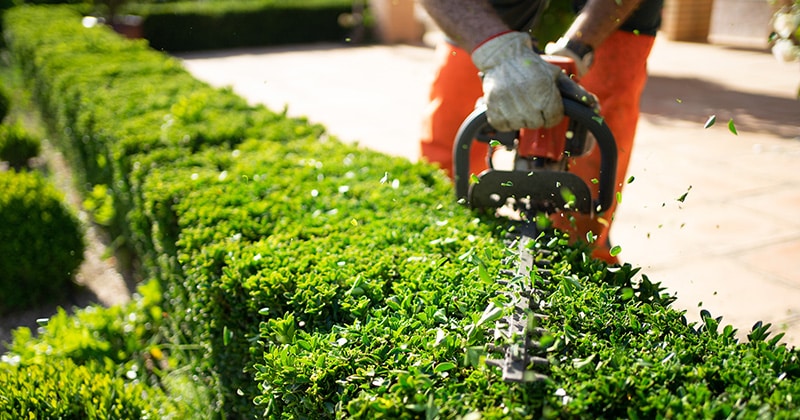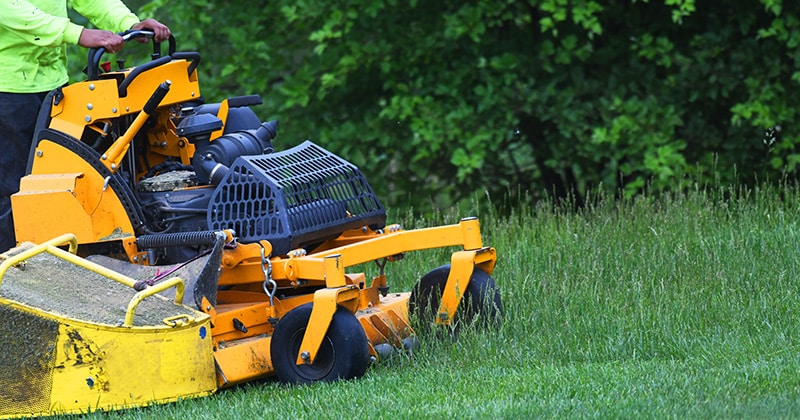Landscaping Liability Insurance: What You Need to Know
There’s a lot that can go wrong during landscaping. In this article, we’ll explain why landscaping liability insurance is vital, what it covers, and how to start protecting your business today.

Staff Contributor
There’s a lot that can go wrong during landscaping. You can damage your house or landscape features or, even worse, hurt yourself or someone else.
That’s why many homeowners turn to you—the landscaping professional—for help.
But you’re not perfect. No one is, right? There’s always a chance an accident can happen, and something gets damaged, or someone gets hurt.
That’s why if you own a landscaping business, you’ve probably been told to get liability insurance.
Insurance can be confusing for business owners, though. So, if figuring out your coverage has you scratching your head, you’re not alone. Business insurance can be overwhelming, especially if you’re new to business ownership.
Landscaping liability insurance is arguably the most significant protection for your business. In this article, we’ll explain why it’s vital and what landscaping liability insurance covers. We’ve also thrown in some tips on figuring out insurance costs and quotes.
Now, let’s get started to ensure your company isn’t vulnerable.
What Is Landscaping Liability Insurance?

Liability insurance is a policy that covers any property damage or injuries caused by your company.
Most businesses carry general liability insurance in case of accidents and unexpected events. For example, if you accidentally cause damage to a client’s property.
Landscaping liability insurance similarly protects landscapers if they unintentionally cause damage. It also covers you if your work results in a non-employee getting hurt and in cases of libel and slander.
Why Does Your Landscaping Business Need Liability Insurance?

Liability cases are usually resolved in one of two ways. You can reach a financial settlement out of court, or the injured party initiates a lawsuit. If they win the suit, the court can order your business to pay damages.
Depending on the case, these damages can range from thousands to millions of dollars. Damages often include things like medical care and disability from injuries. You may also pay damages for pain, suffering, and emotional distress too.
In cases of property damage, repairing or replacing the damage is usually what’s required. But if the person suing you can show other damages as a result of your negligence or error, the penalty may be far more.
For instance, let’s say one of your team members accidentally breaks a gas line on a job. The job is for a store, and they have to close as a result of the break. You might have to pay for the income they lost during their closure.
Most companies don’t have the financial resources to pay settlements out of pocket. This is especially true for small landscaping companies.
Liability insurance prevents you from getting stuck with the bill. Your insurance policy pays the damages or the private settlement.
If you don’t have landscaping liability insurance, you could be on the hook for a devastating amount of money. So much that you might have to sell your home, drain your savings account, or even shutter your landscaping business.
Without this coverage, all your hard work, investment, and your reputation could go down the drain with one unlucky accident.
What Does Liability Insurance for Landscaping Cover?
Landscaping liability insurance covers any settlements or court-ordered damages following a liability lawsuit against your company. It also reimburses related expenses like attorney and court costs.
There are dozens of common hazards in landscape work. Many of these hazards can also be a danger to non-workers and are covered by landscaping liability insurance.
Here are some examples of common risks in landscaping:
- Customer exposure to pesticides or other chemicals
- Tripping or falling hazards created by landscaping work
- Injury of non-employees by sharp tools or equipment
- Use of plants toxic to children or pets
- Damage to structures, swimming pools, and other existing elements at the job site
- Electric shock and electrocution
- Motor vehicle accidents involving non-employees
In general, any situation where you or your workers cause sickness, injury, property damage, or financial loss would be covered by a liability claim.
Landscaping insurance is carried by a variety of businesses in the industry, such as
- Landscapers
- Gardeners
- Lawn care professionals
- Tree pruning and removal specialists
- Excavators and graders
- Hardscape designers
How Much Does Landscaping Liability Insurance Cost?

After “why do I need it,” the most common question about landscaping liability insurance is, “how much does it cost?”
The good news is that landscaping insurance is generally very affordable. And the protection it gives your company is invaluable.
Business insurance costs (including liability insurance) can range from several hundred dollars to several thousand dollars per year. Your exact cost will depend on several factors, such as
- Company size
- Risk level of services provided
- Location
- Operating seasons
- Amount of coverage desired
For example, if your company only offers lawn care and gardening services in the spring and summer, you might pay $40 per month. But if you work year-round and offer things like tree pruning and complete reseeding, you likely pay more.
Insurance providers say most small businesses can expect to pay about $50 per month for general liability coverage.
The cost of your landscaping insurance policy can also be affected by which company you use and how you pay. Bundling all your business insurance with one carrier, for example, can save you money.
You can also get a lower rate by paying your premium in a lump sum versus dividing it into monthly payments. Another way to keep more in your pocket is to select a policy with a higher deductible.
One more thing to consider is how much protection you want. Business liability insurance is usually purchased in increments of $500,000 or $1 million.
If your landscaping business is expanding, you may want to opt for up to $2 million in aggregate coverage.
Be aware when you choose your coverage cap that liability lawsuits in general are rising in this country. An average of $1.2 million is what businesses spend annually tackling litigation.
It may be better to be slightly over-insured than under-insured, just in case.
Is It Risky Not Having Landscaping Liability Insurance?
Yes, it’s incredibly risky not to have landscaping liability insurance.
Imagine the consequences if one of your workers accidentally puts a truck in reverse and backs into a client’s house. Or think about what you’d do if a customer fell into a hole you were digging and broke a leg.
It’s tempting to think that a serious liability case like this won’t happen to your landscaping company. But accidents and property damage occur every day in this field.
If slips, trips, and falls are the leading causes of accidents among landscape workers, it makes sense that these hazards should also be a concern for customers too.
Especially considering the reasonable cost and level of protection it gives you, it would be foolish not to have landscaping liability insurance. You can pay for the annual cost of liability insurance with just one or two landscaping jobs.
In fact, some landscaping businesses are required to have liability insurance. This requirement usually applies to companies that pursue certain contracts, such as with your local town government or school system.
If you apply for a business loan or want to finance a large piece of equipment, you may also be required to have liability coverage. Many states even require liability insurance to maintain a landscaping business license.
Insuring your company shows that you’re a professional who takes your business responsibilities seriously.
Just like you (hopefully) have property insurance for your office and auto insurance for your company vehicles, liability insurance is simply another way to protect yourself.
What Should You Do Next to Get Liability Insurance for Your Landscaping Business?

Whether you’re just working for a few clients or want your landscaping company to grow like a weed, landscaping liability insurance is a must.
And the good news is that it can be quick and easy to purchase the coverage you need. Here are the steps you can take now to protect your business with the right policy:
- Research insurance companies. Most people find it easiest to do some legwork online first. After your initial research, create a shortlist of insurance companies to investigate further. Your colleagues in the business may have recommendations too
- Contact your top choices. Once you have a couple of possibilities, it’s time to reach out. Either call them or use their website contact form to ask about the cost of a policy and what it will specifically cover.
- Consider using an independent insurance agency. If you don’t have time to do your own research, you may want to find a policy through an independent insurance agency. These agencies work with dozens of carriers and can offer a wider selection of landscaping insurance options and price points.
- See if you can bundle insurance policies. Often, you can save money on your liability policy by bundling it. This means getting other business insurance policies with the same carrier or agency. This can include covering things like your office, equipment, worker’s comp, and so on.
Melissa can masterfully bring to life any form of content, whether it’s a landing page or a guide to befriending gnomes. When she’s not crafting stories, she’s either crocheting, smothering her cats in unwelcome affection, or spending time with her husband.


